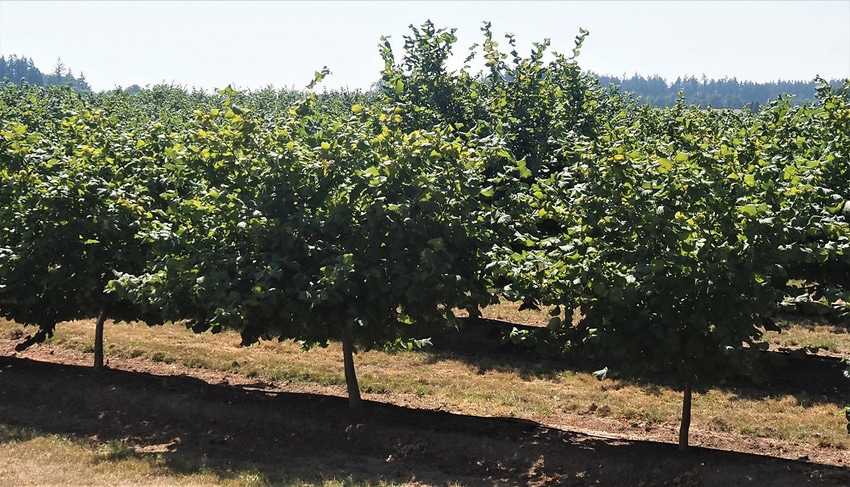
Recent breakthroughs by Oregon State University researchers against a devastating tree disease has helped the state’s hazelnut industry more than double its acreage in the last decade.
The university’s hazelnut breeding program has produced varieties resistant to Eastern Filbert Blight, which has killed numerous trees in the past decade and has the potential to decimate the industry.
With growers replacing their orchards with the newer EFB-resisant varieties, the amount of bearable hazelnut acreage in Oregon doubled between 2014 and 2020, growing from 30,000 to 60,000, according to the state Employment Department. Oregon added another 1,000 acres last year.
“The industry was almost wiped out when the disease was accidentally introduced from the East Coast,” said Nik Wiman, an OSU associate professor and orchard specialist.
Increasing demand for nut proteins has also fueled the expansion, Wiman said during a recent presentation to reporters at OSU’s North Willamette Research and Extension Center in Aurora. But without the EFB-resistant varieties, growers would have to spray as many as four times during the growing season to fight the disease, he said.
“Now we can get away with not spraying,” he said.
The university’s Orchard Crops and Hazelnut Research Program focuses on hazelnuts as well as other orchard crops such as tree fruit, according to the university.
Other research
In addition to combating EFB, the researchers also work on biology and sustainable management of invasive pests such as brown marmorated stink bugs in hazelnuts and spotted-wing drosophila in cherries, according to OSU.
The research has improved management of secondary pests in hazelnuts, including developing phenology models and action thresholds for aphids, mites and their natural enemies, a summary given to reporters explains.
The researchers support other industries, too, including by evaluating cider and heirloom apples and studying viable alternative crops for the Willamette Valley such as almonds, according to the university.
Among the scientists’ most important projects is to improve precision irrigation in hazelnuts to maximize production while conserving water, Wiman said.
“One of our main objectives is to figure out the minimum amount of water we need to grow the crop,” he said.
The direct value of Oregon’s hazelnut harvests to the overall economy has averaged nearly $110 million annually for the past five years, according to the USDA’s National Agricultural Statistics Service.
Oregon dominates U.S. hazelnut production, which itself ranks third in the world behind Turkey and Italy. Hazelnuts are grown differently here than in most other countries, as the Willamette Valley’s tall, single-trunk trees providing a contrast to the more bush-like plants seen elsewhere, the state explains.
OSU researchers have been working with growers on orchard design, incorporating a novel high-density training and management system.
About the Author(s)
You May Also Like






